Introduction
Vegetable oils have many polar sites that help them attach to metal surfaces forming strong lubricant films. They have other advantages such as providing lower foaming, lower misting to metalworking fluids due to the attraction between these polar sites. They are well accepted among operators due to being gentle on the skin. When we polymerize these oils we obtain additional benefits (
Figure 1). We are continuing our studies with the film forming properties of these polymerized oils. Their performance is especially important as they could replace chlorinated paraffins.
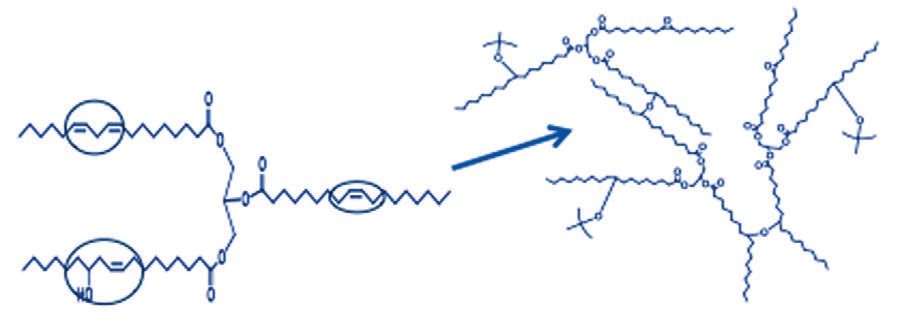 Figure 1. Polymerization of vegetable oils.
Figure 1. Polymerization of vegetable oils.
Afton Chemical polymerizes a variety of vegetable oils. Normally the length of the fatty acids and the geometry of the molecules play a significant role on the lubricity performance of the triglyceride. Triglycerides with longer fatty acids, such as rapeseed oil with 22 carbon long fatty acids, perform better than triglycerides with 18 carbon long fatty acids such as soybean oil. When we polymerize the triglycerides, we alter this structure, eliminating double bonds to increase oxidative stability and decreasing the chance of breaking chains thus decreasing odor problems and providing a steady lubricity performance. In addition we saw that triglycerides with fatty acids containing 18 carbons such as soybean oil start performing as well as rapeseed oil. Moreover, by covering asperities with a self-healing film we may eliminate the need to use EP additives.
When we looked at the performance of polymerized oils (10% lubricity additive in 90% 100 SUS naphthenic oil) and compared it to a medium chain chlorinated paraffin on a Microtap using a three 3 fluted 6 mm steel tap, rotating at 600 rpm, on 1018 cold rolled steel, we saw that lubricity increased (increasing % efficiency) with the increasing polymerization rate (
Figure 2).
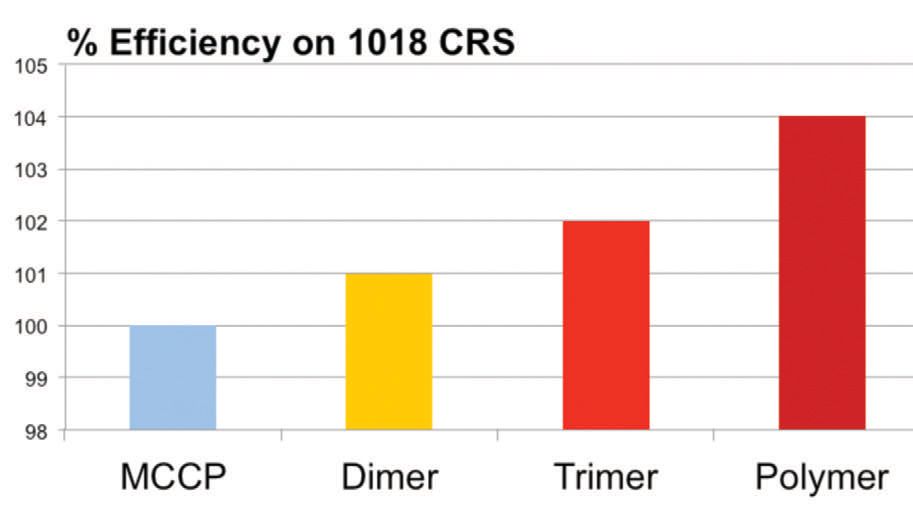 Figure 2. Lubricity using Microtap.
In Metalworking Fluids
Figure 2. Lubricity using Microtap.
In Metalworking Fluids
Polymerized (oxidized) oils were formulated into a semi-synthetic fluid (
Figure 3). It was seen that polymerized oils with Gardner-Holdt K viscosity (275 cSt @ 25°C) performed better than polymerized oils with Gardner-Holdt Z -3 viscosity (4630 cSt @ 25 °C). The performance was also better with the K viscosity canola, castor, rapeseed, soybean oils in tapping operations as measured by Microtap using a three 3 fluted 6 mm steel tap on 1018 cold rolled steel, as seen in
Figure 4.
 Figure 3. A Semi-synthetic formula
Figure 3. A Semi-synthetic formula
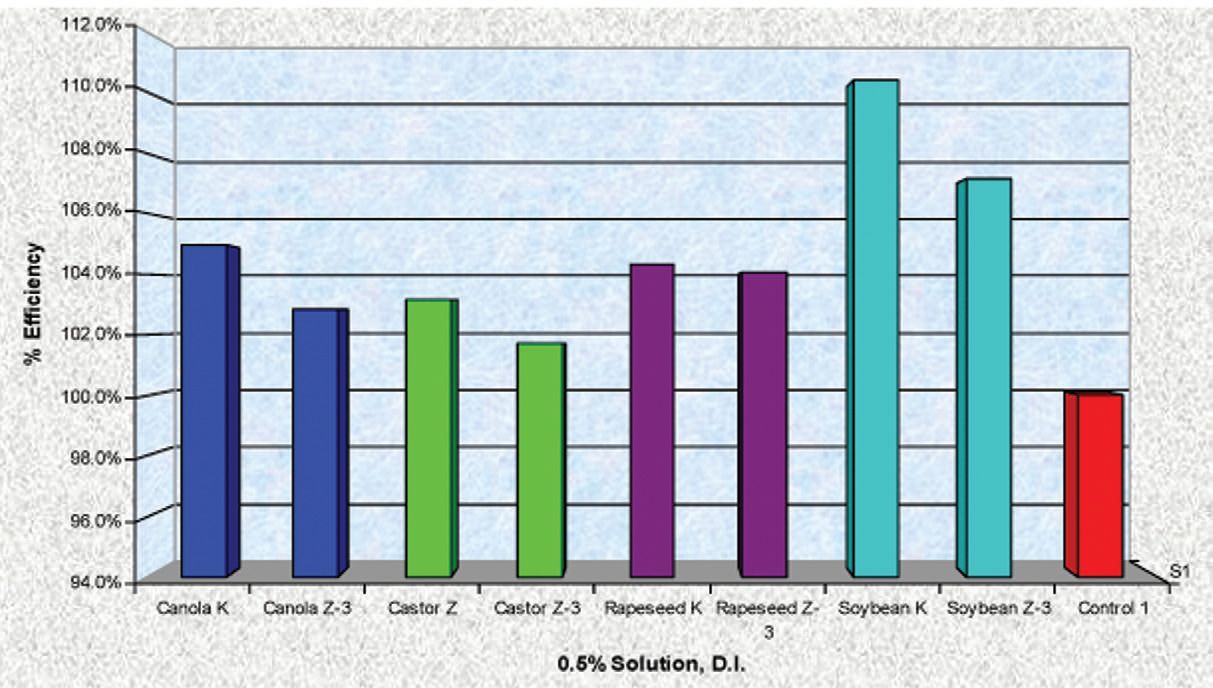 Figure 4. Tapping Torque % Efficiency of polymerized oils in a semi-synthetic metalworking fluid
Figure 4. Tapping Torque % Efficiency of polymerized oils in a semi-synthetic metalworking fluid
We have not only achieved higher efficiency in lubrication with a less expensive oil but also did not have to polymerize to a higher molecular weight.
Film Properties
We used a High Frequency Reciprocating Rig (HFRR) instrument to examine the boundary lubrication regime and measure the friction coefficient of these polymerized vegetables oils in 5% and 10% concentrations in 100 SUS naphthenic oil. The HFRR operates with a ball oscillating across a disk that is immersed in the test fluid. The instrument can measure film formation characteristics through electrical contact resistance, wear by measuring wear scar and boundary friction by measuring the force required to move the ball.
In the
Boundary Regime where the lubricant film is almost nonexistent and surface interactions dominate, we saw that polymerized oils with Z viscosity had more influence in reducing the coefficient of friction compared to the same oils with K viscosity. This is shown in
Figure 5. It was also seen that when the concentrations were increased from 5 to 10% there was a decrease in the coefficient of friction showing strong surface interaction.
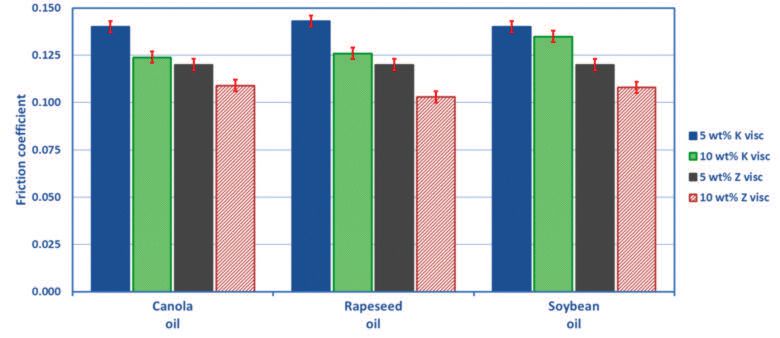 Figure 5. Lubricity of polymerized vegetable oils in the Boundary Regime
Figure 5. Lubricity of polymerized vegetable oils in the Boundary Regime
We also looked at
Thin-Film Friction in
Figure 6. This is in the mixed lubricant regime where both boundary and elastohydrodynamic regimes are present. We used the Mini Traction Machine (MTM). In this instrument there is a ball rotating on a rotating disc that are immmersed in the test fluid. The rotation of the ball and the disc can be adjusted individually. Therefore, the ratio of sliding to rolling actions can be changed and the effects can be studied. Temperature can be adjusted and gives the ability to measure the effect of temperature. These tests were conducted at 75°C with a 20% slide to roll ratio under 20 N. We again saw that the Z viscosity polymerized oils consistently provide lower friction at equivalent concentrations when compared to the K viscosity oils. We also saw that polymerized soybean oil with 18 carbon fatty acid chains performed better than polymerized rapeseed oil with 22 carbon fatty acid chains. We see a more economical and readily available oil giving superior performance when polymerized.
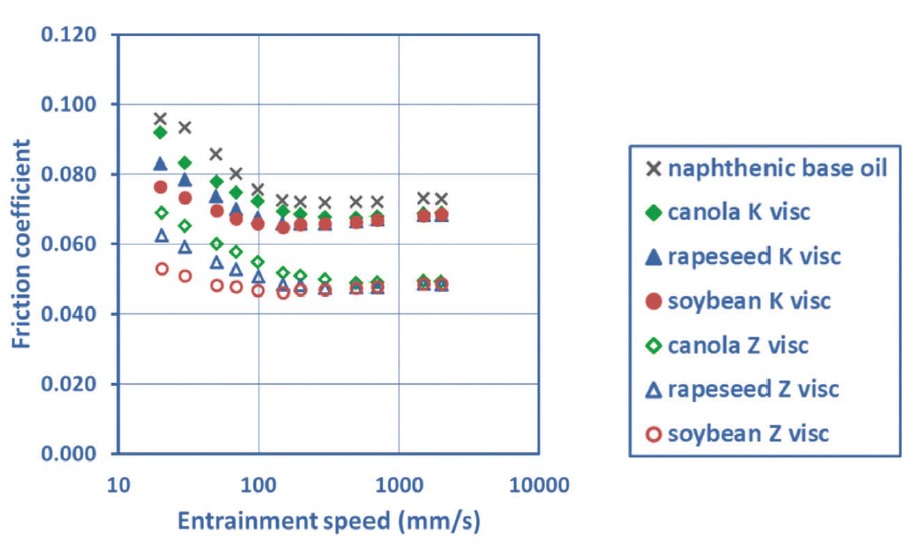 Figure 6. Thin Film Friction
Conclusion
Figure 6. Thin Film Friction
Conclusion
Polymerized vegetable oils are good lubricity additives. We see that there is an optimum window for the polymerization where the lubricant is most effective. They perform well in water based metalworking fluids as well as in neat oils. They can replace chlorinated paraffins and most esters. In addition to lubricity, the polymerization allows average chain length fatty acids to perform as well as long chain fatty acids.
Acknowledgements
I would like to thank my co-authors Dr. Mark Devlin and Dr. Carl Bennett from the Afton Chemical Fundamental Research Group, and Mr. Steven Anderson and Ms. Karen Harrington from Afton Chemical’s Metalworking Group who made this paper possible.